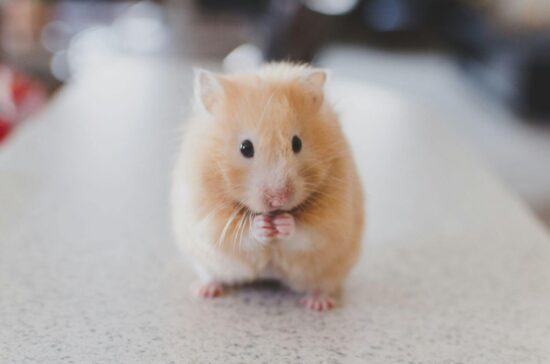You hear a tiny mouse squeak in your walls and wonder what’s going on. Scientists have spent years studying these sounds and found that mouse communication is much more complex than anyone expected.
This article goes over why mice squeak, and what it means for your pest control plan when you hear them.
Why Do Mice Squeak?
The truth about why mice squeak is more interesting than most people think. These small sounds are actually part of a complex communication system that helps mice survive in a dangerous world.
Mice make different types of sounds for different reasons. Some squeaks warn other mice about danger. Others help mice find mates or call for help. Every squeak has a purpose, and mice use their voices much more than people realize.
Understanding why mice squeak helps us learn about animal behavior and can even help with pest control. Mouse communication is much more advanced than scientists originally thought, and each sound serves a specific function in their daily lives.
- Designed to humanely capture mice without causing any harm
- The trap cage is easy to set up and use
- The trap cage has a large capacity, allowing it to trap multiple mice at once
- Made of high-quality materials that are durable and reusable
How Mice Make Two Types of Sounds
Most people only know about the squeaks they can hear, but mice actually make two completely different types of sounds. The squeaks humans hear are just one part of how mice communicate.
Mice make ultrasonic sounds that humans cannot hear. These high-frequency calls range from 30 to 110 kilohertz, which is way above what our ears can detect. Most mouse communication happens through these ultrasonic calls because predators like cats and owls cannot hear them either.
But mice also make the audible squeaks that humans can hear. These sounds fall between 3 and 8 kilohertz. Making sounds that predators can hear seems like a bad idea, but mice have good reasons for doing this.
Scientists found that mice choose which type of sound to make based on the situation. When they want to stay hidden, they use ultrasonic calls. When they need to send urgent messages or defend themselves, they make audible squeaks that everyone can hear.
How Mouse Voice Boxes Work
Mice make sounds using their voice boxes, called larynxes, but their anatomy works differently than human voices. Recent research shows exactly how mice create their different types of calls.
For ultrasonic sounds, mice use something called wall impingement. Air rushes up from their lungs and hits the inner wall of cartilage in their voice box. This creates high-frequency whistles that other mice can hear but predators usually cannot.
For audible squeaks, mice use their vocal folds and membranes in different ways. They can quickly switch between these sound-making methods, giving them the ability to make many different types of calls.
The brain controls all of this through a region called the periaqueductal gray, or PAG. This area acts like a control center for mouse sounds. Different parts of the PAG handle different types of calls, from social sounds to emergency squeaks.
Why Baby Mice Squeak
Baby mice start squeaking from their first days of life. Pups are born blind and helpless, so they depend on sound to communicate with their mothers. When pups get separated from the nest, they make specific calls that tell their mother to come get them.
These isolation calls are loudest when pups are about eight days old. As they grow up and become more independent, they squeak less often. This calling behavior helps make sure baby mice stay safe and get the care they need.
Mother mice respond quickly to these calls. The sounds trigger an automatic response that makes mothers search for their babies and bring them back to safety. This system has helped mice survive for millions of years.
Social Squeaking in Adult Mice
Adult mice use sounds for complex social interactions. Male mice make elaborate songs when they smell female pheromones. These courtship songs can include up to 20 notes per second and follow specific patterns, similar to bird songs.
Female mice also make sounds during social situations. They use different calls when interacting with other females and when meeting potential mates. These vocalizations help mice recognize each other and coordinate group activities.
Mice squeaking serves many social purposes. Mice use sounds to maintain contact with family members, establish territories, and coordinate activities like foraging for food. Social squeaking helps mouse colonies work together and stay organized.
Fear and Stress Squeaking
Mice make some of their loudest sounds when they are scared, stressed, or in danger. These distress calls serve several important functions that can help mice survive threatening situations.
When threatened, mice make alarm calls that warn other mice about danger. These calls give family members a chance to hide or escape before a predator finds them. The warning system helps protect the entire mouse colony.
- Designed to humanely capture mice without causing any harm
- The trap cage is easy to set up and use
- The trap cage has a large capacity, allowing it to trap multiple mice at once
- Made of high-quality materials that are durable and reusable
Fear-based squeaking can also startle predators. A sudden loud squeak might surprise a hunting cat or owl enough to give the mouse a chance to escape. Some scientists think these calls might even attract multiple predators to create confusion.
Research shows that anxious mice squeak more often than calm mice. Studies using mice bred for high anxiety found they made audible sounds much more frequently when handled or stressed. This suggests that individual mice have different tendencies to vocalize when scared.
Emotional Squeaking
Scientists have found that mouse sounds are connected to their emotions. Mice make different calls when they are happy, excited, scared, or in pain. This emotional squeaking helps researchers understand what mice are feeling.
Happy mice make different sounds than stressed mice. Male mice even increase their calling when they are sexually excited. This shows that mice squeaking reflects their emotional state, similar to how humans might laugh when happy or cry when sad.
Brain chemicals like dopamine affect how much mice vocalize. Mice with problems in their dopamine systems are much quieter than normal mice. This connection between brain chemistry and vocalization helps scientists study mouse emotions and behavior.
Pain causes specific types of mouse calls, but not all defensive squeaks mean the mouse is hurt. Some squeaks are purely fear responses that happen even when mice are not being physically harmed. Understanding this difference helps researchers know when mice are truly suffering.
Why Mice Evolved to Squeak
From an evolutionary standpoint, why mice squeak makes sense when you consider how dangerous life is for small prey animals. Good communication can mean the difference between survival and becoming food for a predator.
Ultrasonic communication gives mice a huge advantage because most predators cannot hear these sounds. This allows mice to share information about food, coordinate group activities, and maintain social bonds without telling predators where they are.
But sometimes audible squeaks are worth the risk. When a mouse is caught by a predator, loud distress calls might attract other predators to the area. If two predators start fighting over the mouse, it might escape during the confusion.
Audible squeaks might also tell predators that the mouse is alert and ready to fight back. Many predators prefer easy targets, so a mouse that shows it knows about the threat might convince the predator to look for easier prey.
Current Research on Mouse Sounds
Modern scientists use advanced technology to study mice squeaking in great detail. Computer programs can automatically identify different types of mouse calls and find patterns that humans would miss.
Researchers have identified at least nine different types of mouse calls. Each type has specific sound characteristics and purposes. Some calls last just milliseconds while others continue for several seconds.
Brain imaging shows exactly which parts of the mouse brain control different vocalizations. Scientists can even trigger specific calls by stimulating certain brain areas with light or chemicals. This research helps us understand how the brain controls communication.
These studies have practical uses beyond basic science. Mouse vocalizations help test new drugs for human brain diseases. Changes in calling patterns can show whether treatments are working before other symptoms change.
What House Mice Tell Us
For people with mice in their homes, understanding why mice squeak provides useful information. Most house mice are naturally quiet and try to avoid detection. Frequent squeaking might mean mice are stressed, trapped, or having problems.
Mice are most active at night, so squeaking usually happens in the evening and early morning. These sounds often represent normal social communication rather than distress. However, loud or constant squeaking might suggest mice are having trouble finding food, water, or safe places to nest.
The amount of mice squeaking can indicate how many mice are present. Single mice are relatively quiet, but larger groups make more sounds as they coordinate activities and maintain social relationships. This information can help with detection and control efforts.
Broader Implications
Research into why mice squeak contributes to our understanding of how all mammals use sounds to communicate emotions and social information. The brain circuits that control mouse squeaking are similar to those involved in human speech and emotional expression.
This research raises important questions about animal welfare. If mice have complex emotional lives shown through their communication systems, it affects how we think about their capacity for suffering and their need for proper care.
Understanding mouse communication also helps conservation efforts. Human noise pollution interferes with animal communication systems. Knowing how mice use different sound frequencies helps scientists assess how environmental noise affects wild rodent populations.
Future Research Directions
Scientists continue learning new things about mouse communication. Recent studies show that genetics influence calling patterns, meaning some aspects of vocalization are inherited while others are learned through experience.
New technology allows researchers to study mouse behavior in natural settings without disturbing the animals. These tools show how wild mice use sounds differently from laboratory mice, giving a more complete picture of natural mouse communication.
The field is moving toward more humane research methods that recognize the emotional complexity of mice. Understanding that mice squeaking reflects real emotions encourages scientists to develop better welfare standards and more ethical research practices.
Understanding Small Sounds
The next time you hear a tiny squeak, remember that you are listening to a complex communication system that took millions of years to develop. Why mice squeak is not just about making noise but represents an elegant solution to survival challenges.
These small sounds carry messages about fear and joy, danger and safety, loneliness and companionship. They show that mice, despite their size, have developed sophisticated ways to communicate with each other.
From ultrasonic love songs to urgent distress calls, mouse vocalizations reveal a rich emotional and social world that mostly stays hidden from human perception. Understanding these communications satisfies our curiosity about nature and provides insights into communication, emotion, and consciousness.
The simple mouse squeak teaches us quite a lot about what it means to be a social, emotional, communicating creature. That is remarkable for such a tiny sound.



